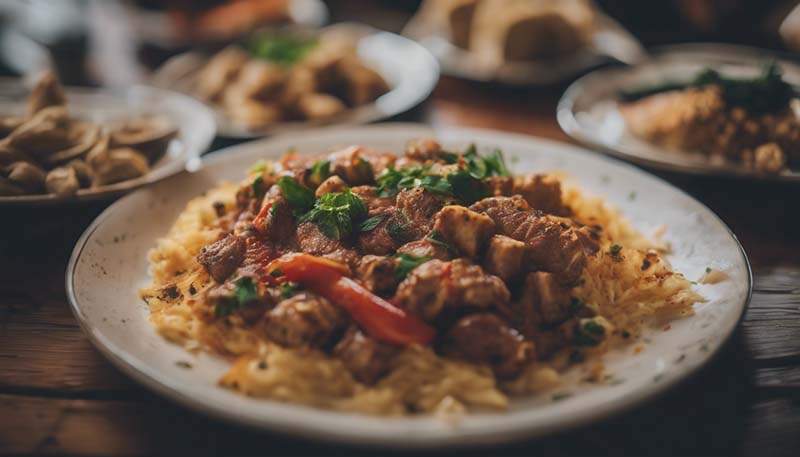The Authentic Taste of Lebanese Cuisine
Welcome to a culinary journey through the vibrant flavors and rich traditions of Lebanese cuisine. Known for its fresh ingredients, unique spices, and diverse culinary influences, Lebanese food offers a delightful experience for the senses.
Introduction
Lebanese cuisine is a delightful blend of Mediterranean, Middle Eastern, and Eastern flavors. It has been shaped by the country's history, geography, and cultural exchange with its neighbors.
Key Ingredients
Lebanese cuisine is characterized by the use of fresh, high-quality ingredients. Some of the most common ingredients include:
- Olives: A staple in Lebanese cooking, used for both eating and oil production.
- Lemons: Used for their acidity and bright flavor in various dishes.
- Herbs: Mint, parsley, and cilantro are used generously to add freshness and aroma.
- Spices: Allspice, cinnamon, and sumac are some of the spices that add warmth and depth to the dishes.
- Meats: Chicken, lamb, and beef are popular choices, often grilled or cooked in stews.
- Grains: Bulgur wheat and rice are used in many traditional dishes.
Signature Dishes
Lebanese cuisine is home to a variety of delicious and unique dishes. Some of the most famous ones include:
- Kibbe: A dish made from ground meat, bulgur wheat, and various spices, often served with yogurt or tahini sauce.
- Tabbouleh: A refreshing salad made with finely chopped parsley, tomatoes, bulgur wheat, and mint.
- Fattoush: A hearty salad with pita bread, fresh vegetables, and a tangy sumac dressing.
- Baklava: A sweet pastry made from layers of filo dough, nuts, and honey or syrup.
- Shawarma: Thinly sliced meat, typically chicken or lamb, served in a wrap with vegetables and tahini sauce.
Culinary Techniques
Lebanese cooking techniques emphasize the importance of freshness and simplicity. Some common techniques include:
- Grilling: A popular method for cooking meats, resulting in a smoky and flavorful dish.
- Roasting: Used for vegetables and meats, often seasoned with a mix of spices and herbs.
- Stewing: A slow cooking method that allows flavors to meld and intensify.
- Baking: Used for desserts and some savory dishes, such as manakish (flatbread).
- Chilling: Many salads and yogurt-based dishes are served cold to highlight their freshness.
Dining Etiquette

When dining in a traditional Lebanese setting, it's important to be aware of the following etiquette:
- Sharing: Dishes are usually served family-style, with everyone sharing from the same plates.
- Eating with Hands: It's common to eat certain dishes, like manakish, with your hands.
- Respect for the Host: Wait for the host to start eating before you begin, and always express gratitude for the meal.
- Finishing Your Plate: It's considered polite to finish the food on your plate, as it shows appreciation for the meal.
Conclusion
Lebanese cuisine is a true culinary gem, offering a rich tapestry of flavors and traditions. Whether you're exploring the vibrant street food or enjoying a family-style meal, you're sure to be captivated by the authenticity and warmth of this delicious cuisine.
Leave a Comment